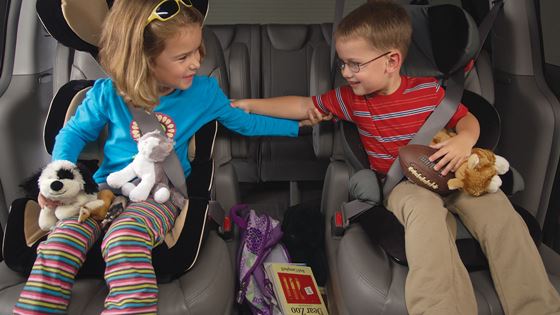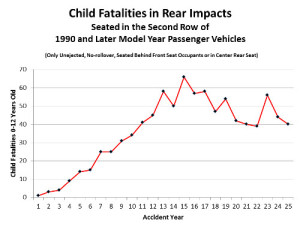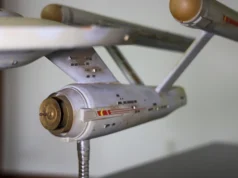
If you’re a parent with small children in your car or truck, do you think they are really safe in a back seat directly behind you or an adult passenger? A leading safety group saying you can be making a potentially deadly mistake thats already cost the lives of about 900 children, and they’re trying to do something about it.
“The Center for Auto Safety” (CAS) today petitioned the National Highway Traffic Safety Administration (NHTSA) to “take action to protect children riding in the rear seats of vehicles from the risk of being killed or severely injured when struck by a collapsing front seatback in a rear-end crash.”
The petition asks NHTSA to warn parents as follows:
If Possible, Children Should Be Placed In Rear Seating Positions Behind Unoccupied Front Seats. In Rear-End Crashes, The Backs Of Occupied Front Seats Are Prone To Collapse Under The Weight Of Their Occupants. If This Occurs, The Seat Backs And Their Occupants Can Strike Children In Rear Seats And Cause Severe Or Fatal Injuries
Separately, the Center filed a detailed analysis of lawsuits, police reports and litigated cases that shows the dangers of seat back collapse are far greater than what the agency recognizes because seat back collapse is not captured by the FARS database on which the agency has relied for all too long to deny there is a seat back collapse danger. FARS does not provide any information on seat back collapse. Out of 64 seat back collapse death and injury crashes, the Center only found 2 where the police report referenced seat back collapse.
The petition reports on the results of an analysis of NHTSA data by Friedman Research Corp. Done at the Center’s request, the analysis shows that over the twenty-four year period 1990-2014, nearly 900 children seated behind a front-seat occupant or in a center rear seat died in rear impacts of 1990 and later model-year cars.

In 1974, the petition notes, NHTSA announced its intention to develop a new standard “covering the total seating system” and requiring dynamic rear-impact crash testing. But thirty years later, in 2004, it abandoned the plan, saying it needed “additional research and data analysis” and leaving in place the woefully weak requirements of FMVSS 207, a standard which has not been upgraded since its adoption in 1967. In a research study of 30-mph rear crashes done one year earlier which is not cited in the rulemaking termination, NHTSA researchers warned of the danger to children placed in rear seats at NHTSA’s recommendation. “Further, fatalities and injuries to rear child occupants due to seat back collapse of the front seat in rear impacts have also been reported. This is especially of concern since NHTSA recommends to the public that children of age 12 and under should be placed in the rear seat.”
In its conclusion, the petition states that warning parents of the hazards of front seatback collapse to children in rear seat is an essential measure “made necessary by the continued absence of a federal motor vehicle safety standard requiring that cars be equipped with adequately protective front seats.” The agency “can take most of the requested steps on its own, without time-consuming rulemaking, and should do so promptly,” the petition notes.
By Al Sunshine, SouthFloridaReporter.com, Consumer Investigator, Mar. 10, 2016
[/vc_message]











